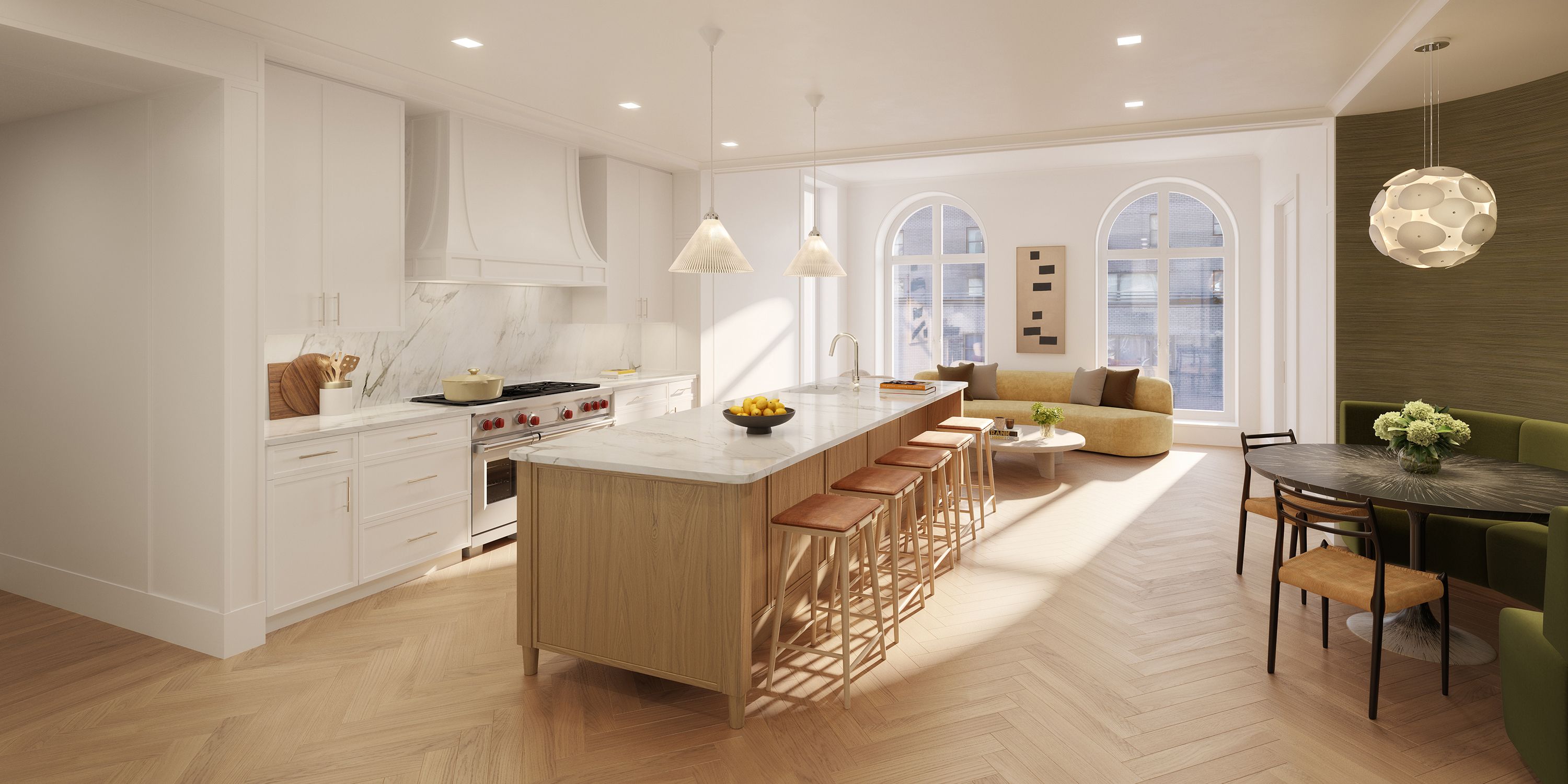Please rotate your screen for best viewing experience
Press

People Relate to a Well-Proportioned Space ‘Without Even Knowing Why’
Contemporary and modern design may dominate luxury residences and developments today, but architect Elizabeth Graziolo has earned acclaim for creating spaces with a classical approach.
Her latest project, 200 East 75th St., an 18-story condominium on Manhattan’s Upper East Side, is reflective of her affinity for this more traditional aesthetic. The building features details that aren’t common in new residential projects, such as grand arched windows, finely crafted architectural trim and gallery-style residential foyers.
The Haitian-born, New York-based Graziolo is the founder and principal of Yellow House Architects, a firm that offers architectural and interior services for private homes and large developments as well as commercial spaces.
Graziolo, 49, recently spoke with Mansion Global about why she favors a classical look, the challenges of being a business owner and how her creative background helps her along the way.
Mansion Global: Why does classical design appeal to you?
Elizabeth Graziolo: It appeals to me because it is all about proportion. When it comes to architecture and creating a home, I define proportion as the relationship between space and a person. It is the root of all spaces, and people relate to that without even knowing why.
At a time when design aesthetics in real estate projects lean contemporary, do you think that classical style is starting to make a comeback? If so, why?
Yes. It’s starting to make a comeback in the sense that the language is reviving itself and has been the catalyst of modern architecture. That is how classical style has been used and reused throughout history. Even if it is not at its full glory, the roots are very much starting to show in contemporary architecture.
What other architectural styles are becoming increasingly prevalent in luxury real estate projects?
I am seeing a lot of clean and contemporary styles in interiors. Meanwhile, a traditional exterior has been called upon more than the “glass box” that has been trending for so long.
What’s your design philosophy, and does it change depending on where your projects are?
It always goes back to proportion. I have an undeniable urge to create balanced spaces in both architecture and interiors. The scale of a piece of furniture must be right for the space to ensure it is well-balanced and proportional. That philosophy never changes—it doesn’t matter if you are building a chapel or a home, it must always be in alignment.
Yellow House Architects recently designed its first full-scale residential building. In what ways did that process differ from the firm’s other projects, namely private homes?
When working on a building that has multiple residential units, the challenge is how to make each unit feel tailored and luxurious while working within a strict budget. To not only come in under budget but to make each unit mimic a high-end private residence, we have to think in a more unique and creative way when it comes to the details.
In comparison, when we are working on a single-family private residence, there is always a budget, but we are generally always encouraged to go further. Within a private residence, we can hire the most high-end craftsman from all over the world to create a beautiful product. In a multi-unit building, we have to figure out how to get the same, world-class look and finish within the budget confinements.
How do you balance being a creative and a business owner?
It’s two different mindsets. The more I am learning about business, I learn that being creative has helped me become the businesswoman I am today. For example, when I am going through my books with my financial team, my head is always thinking about how to solve things differently—just like when I am building a home. They seem shocked that I think of financials in an unconventional way, but being creative has only improved my business acumen.
What meaningful objects are in your own living space?
Besides my cozy bed, I inherited an upright piano from a friend. My kids grew up and continue to play on it all of the time.
What’s your definition of luxury?
To me, luxury is a refined piece of furniture, a bespoke textural piece of fabric and a comfortable chair you can spend hours in.